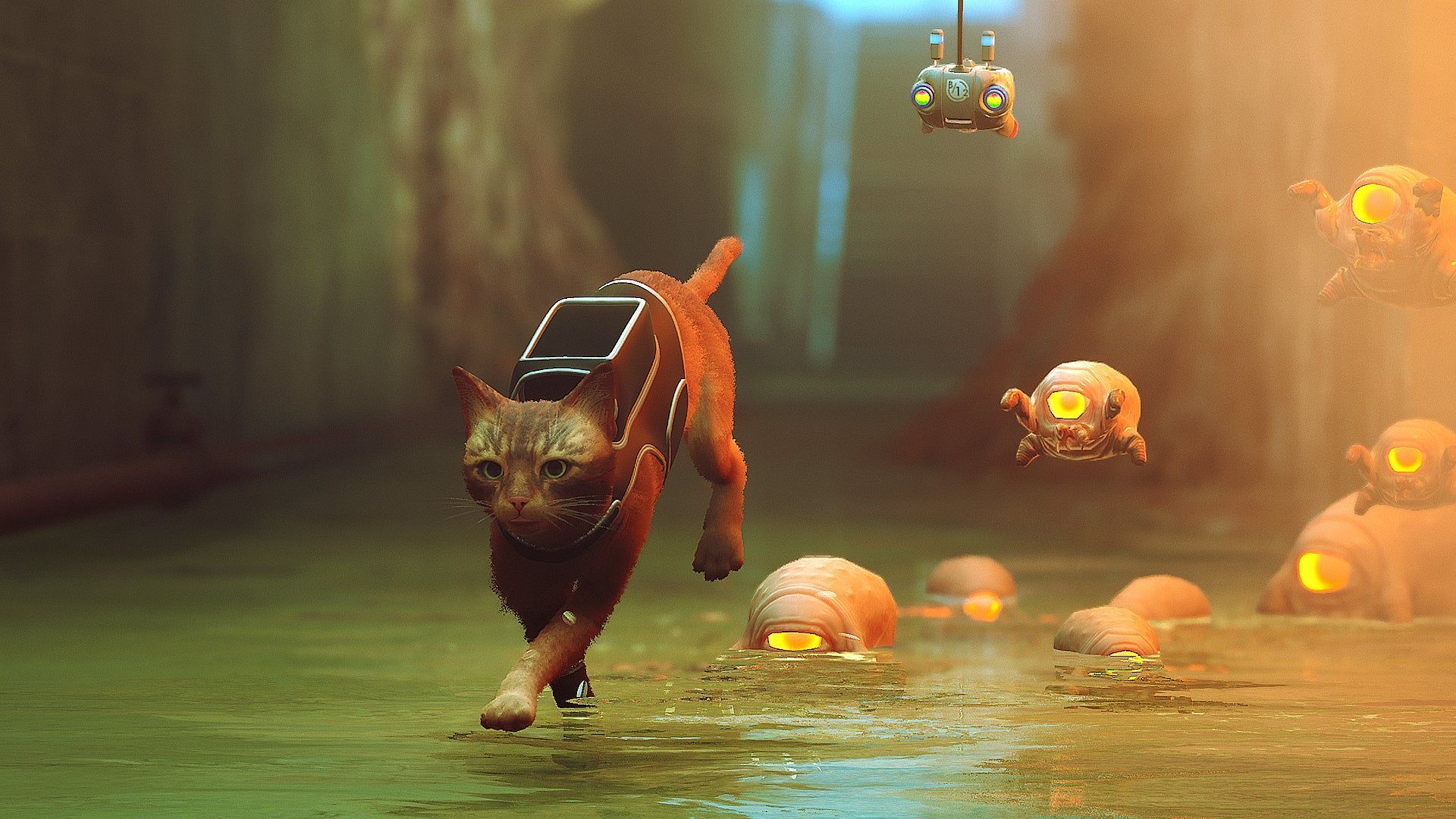Games have evolved as a medium and act as a canvas for varied storytelling. Developers resort to unique art styles to deliver a game that sticks in the memory and weaves a narrative without losing its charm. This leads some games to possess vibrant aesthetics that hide twisted lore.
Players can either discover these hidden backstories via collectibles or through easter eggs. There are, however, a handful of games that appear colorful with a playful art style and one can miss the dark undertones despite finishing them. Such titles leave a lasting impression and force us to replay them to spot the hints that allude to a much darker story.
Disclaimer: This listicle is subjective and solely reflects the writer's opinions.
Looking for Crossword hints & solutions? Check out latest NYT Mini Crossword Answers, LA Times Crossword Answers, and Atlantic Crossword Answers
Stray and 4 other innocent-looking games with a grim lore
1) Undertale
Undertale's pixelated and cartoonish characters convey a rather muted and easygoing vibe. It dwells on mortality, the most fundamental feature of existence, deep within. To avoid killing their adversaries until there is no other option, players are encouraged to spare them in this game.
Frisk, a little child who wakes in a monster-filled underground world, acts as the primary character of the plot. The opponents in Undertale are portrayed as also being malevolent, but after players understand their backstories, they uncover that most of them share many attributes with humans and that their suffering is the result of some sort of tragedy.
Gamers may decide whether to play through the title as a genocidal playthrough or as a pacifist playthrough wherein they attempt to befriend every monster.
2) Valiant Hearts
Players of Valiant Hearts are transferred to the chaotic years after World War I when the conflict's repercussions and political turbulence wrought havoc on people's daily lives. With both the game's vibrant design scheme and cutesy characters, it makes perfect sense to classify it as a lighter 2D adventure game. Yet, the tale effectively illustrates the horrors that soldiers may have endured throughout the conflict.
Numerous characters, notably Emile, Freddie, Anna, Karl, and more that players can control are on a quest to locate close relatives who've been separated from them due to the war but originate from different nations. Some individuals exhibit a habit of seeking closure through the act of seeking revenge for their relatives who passed away.
3) Inside
Players in the dystopian future of Within, where machines and affluent people rule the planet, take control of a little kid from a 2.5D viewpoint. The game's gameplay may first give players the impression that they would be solving puzzles and slyly eluding security personnel from hidden facilities, but the story is rather dismal.
It is simple to write off the boy's ability to employ mind control gadgets to solve challenging challenges as merely a gaming mechanism. According to mythology, individuals on this planet are controlled by the wealthy and have no control over their lives or behavior.
At a superficial glance, Inside feels like it is aimed at children, but it has mature storytelling that alludes to modern-day exploitation at the hands of selected elite groups or organizations.
4) Doki Doki Literature Club
Doki Doki Literature Club does a splendid job of presenting a warm and welcoming picture and immerses the player in its visual novel type of storytelling. Many would consider it a high school romance genre, but the tone of the game gradually changes and flips the player's expectations.
What begins as a pleasant student's experience begins to unravel real-life issues like depression, self-harm, and other mature themes that are explicitly opposite to the game’s art style. Doki Doki Literature Club also tries to break the fourth wall in some of the scenes to engross the player further in this twisted visual novel-style horror narrative experience.
5) Stray
Stray was lauded for its cute playable feline protagonist and adorable moments in the game. Not only is Stray visually appealing, but it also has robust gameplay mechanics and light puzzle-solving elements that strike an ideal balance between playability and complexity.
Stray is set in a post-apocalyptic world devoid of humans and is populated by robots. Throughout the title, players will rescue a tiny robot companion called B-12 who acts as a translator for the cat. One can aid B-12 in recollecting its past by finding graffiti and objects of interest throughout the world.
These collectibles hint that humans were eradicated by an unknown plague. Stray features an enemy type called Zurks that attacks the player and kills the cat if they don’t sprint away from them in time. Many fans speculate that the downfall of humans was led by these creatures that were created by humans in the first place, alluding to their careless attitude towards nature.
While the aforementioned titles have darker lore than expected, they are all exceptional titles to engage in. Each of these stands out on its own and acts as a precursor for the community to indulge in theories and speculations that ultimately keep the lore alive long after release.
Check out our NYT Connections Helper to get hints and answers for today's connections puzzle.

